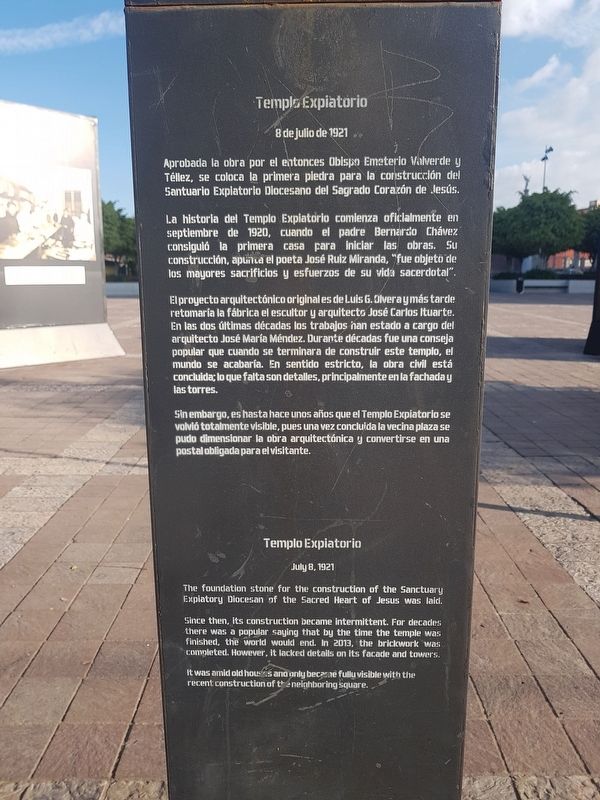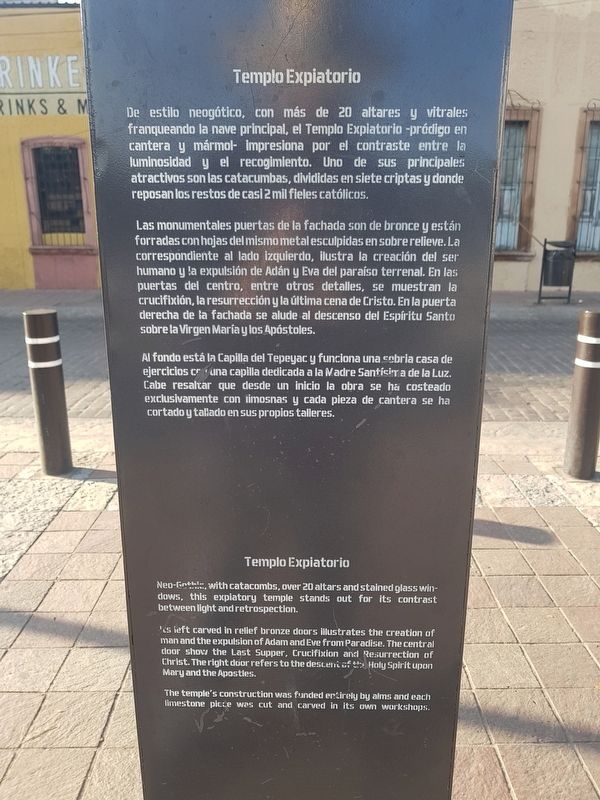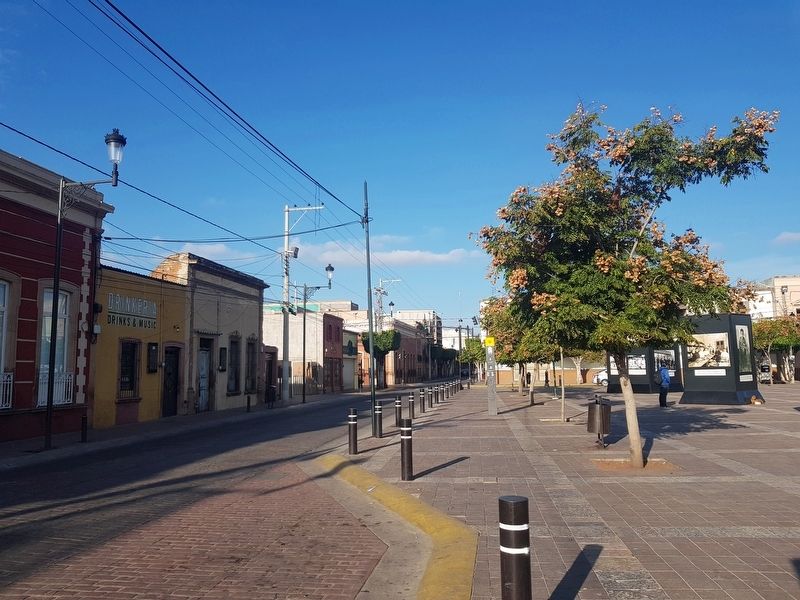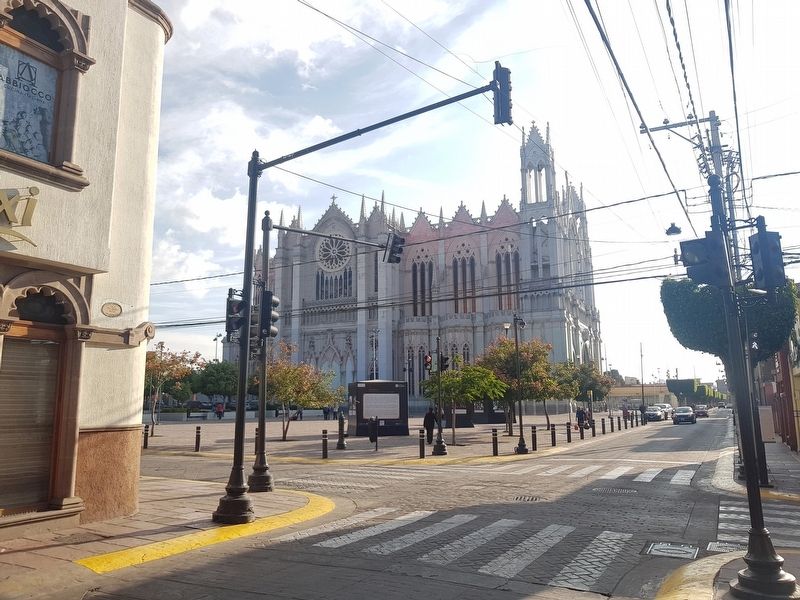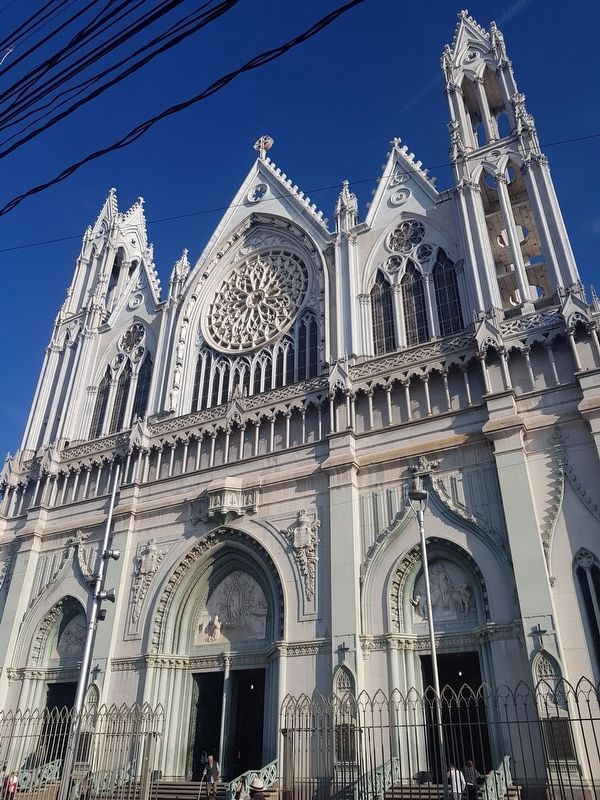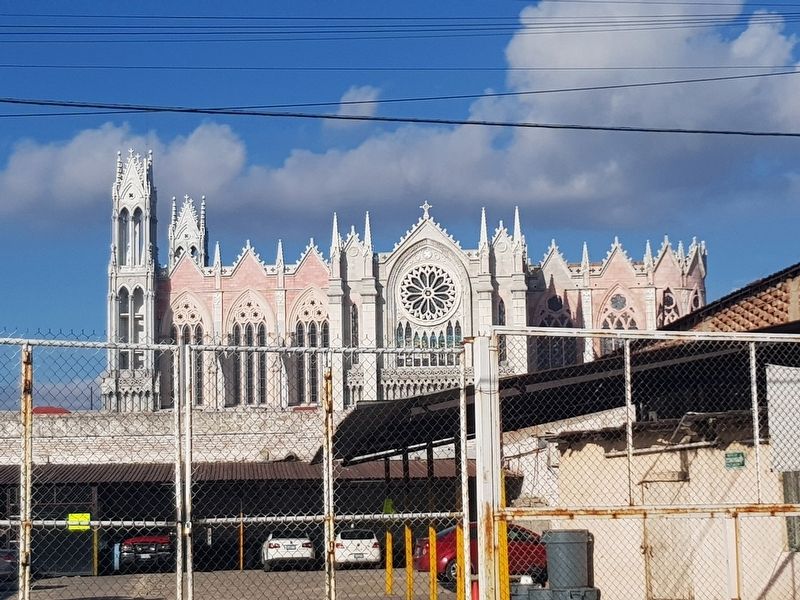León, Guanajuato, Mexico — The Central Highlands (North America)
Templo Expiatorio
8 de julio de 1921
Aprobada la obra por el entonces Obispo Emeterio Valverde y Téllez, se coloca la primera piedra para la construcción del Santuario Expiatorio Diocesano del Sagrado Corazón de Jesús.
La historia del Templo Expiatorio comienza oficialmente en septiembre de 1920, cuando el padre Bernardo Chávez consiguió la primera casa para iniciar las obras. Su construcción, apunta el poeta José Ruiz Miranda, “fue objeto de los mayores sacrificios y esfuerzos de su vida sacerdotal”.
El proyecto arquitectónico original es de Luis G. Olvera y más tarde retomaría la fábrica el escultor y arquitecto José Carlos Ituarte. En las dos últimas décadas los trabajos han estado a cargo del arquitecto José María Méndez. Durante décadas fue una conseja popular que cuando se terminara de construir este templo, el mundo se acabaría. En sentido estricto, la obra civil está concluida; lo que falta son detalles, principalmente en la fachada y las torres.
Sin embargo, es hasta hace unos años que el Templo Expiatorio se volvió totalmente visible, pues una vez concluida la vecina plaza se pudo dimensionar la obra arquitectónica y convertirse en una postal obligada para el visitante.
Templo Expiatorio
De estilo neogótico, con más de 20 altares y vitrales franqueando la nave principal, el Templo Expiatorio – pródigo en cantera y mármol – impresiona por el contraste entre la luminosidad y el recogimiento. Uno de sus principales atractivos son las catacumbas, divididas en siete criptas y donde reposan los restos de casi 2 mil fieles católicos.
Las monumentales puertas de la fachada son de bronce y están forradas con hojas del mismo metal esculpidas en sobre relieve. La correspondiente al lado izquierdo, ilustra la creación del ser humano y la expulsión de Adán y Eva del paraíso terrenal. En las puertas del centro, entre otros detalles, se muestran la crucifixión, la resurrección y la última cena de Cristo. En la puerta derecha de la fachada se alude al descenso del Espíritu Santo sobre la Virgen María y los Apóstoles.
Al fondo está la Capilla del Tepeyac y funciona una sobria casa de ejercicios con una capilla dedicada a la Madre Santísima de la Luz. Cabe resaltar que desde un inicio la obra se ha costeado exclusivamente con limosnas y cada pieza de cantera se ha cortado y tallado en sus propios talleres.
Templo Expiatorio
July 8, 1921
The foundation stone for the construction of the Sanctuary Expiatory Diocesan of the Sacred Heart of Jesus was laid.
Since then, its construction became intermittent. For decades there was a popular saying that by the time the temple was finished, the world would end. In 2013, the brickwork was completed. However, it lacked details on its façade and towers.
It was amid old houses and only became fully visible with the recent construction of the neighboring square.
Templo Expiatorio
Neo-Gothic, with catacombs, over 20 altars and stained glass windows, this expiatory temple stands out for its contrast between light and retrospection.
Its left carved in relief bronze doors illustrates the creation of man and the expulsion of Adam and Eve from Paradise. The central door show the Last Supper, Crucifixion and Resurrection of Christ. The right door refers to the descent of the Holy Spirit upon Mary and the Apostles.
The temple’s construction was funded entirely by alms and each limestone piece was cut and carved in its own workshops.
Topics. This historical marker is listed in these topic lists: Churches & Religion • Man-Made Features. A significant historical date for this entry is July 8, 1921.
Location. 21° 7.206′ N, 101° 40.532′ W. Marker is in León, Guanajuato. Marker is on Calle Francisco I. Madero just west of 13 de Septiembre
, on the right when traveling west. Touch for map. Marker is at or near this postal address: Calle Francisco I Madero 709, León GTO 37000, Mexico. Touch for directions.
Other nearby markers. At least 8 other markers are within walking distance of this marker. Children Heroes Park (approx. 0.4 kilometers away); House of Cecilio Louis Long (approx. half a kilometer away); Manuel Doblado Theater (approx. 0.6 kilometers away); Plaza of Martyrs (approx. 0.6 kilometers away); House of María Joaquina de la Portilla y Torres (approx. 0.8 kilometers away); Royal Houses and Early Municipal Council (approx. 0.8 kilometers away); Massacre of January 2, 1946 (approx. 0.8 kilometers away); Calzada de los Héroes (approx. 0.8 kilometers away). Touch for a list and map of all markers in León.
Credits. This page was last revised on January 8, 2019. It was originally submitted on January 8, 2019, by J. Makali Bruton of Accra, Ghana. This page has been viewed 259 times since then and 27 times this year. Photos: 1, 2, 3, 4, 5, 6. submitted on January 8, 2019, by J. Makali Bruton of Accra, Ghana.
